Remote work has become increasingly prevalent in recent times, and having the right equipment is crucial for effective communication and productivity. When it comes to remote work, having a reliable and high-quality microphone is essential for clear and professional audio. Here are the best microphones for remote work that you should consider, as suggested by industry experts:
- USB Microphones
- Headset Microphones
- Lavalier Microphones
- Shotgun Microphones
- Bluetooth Microphones
- Condenser Microphones
- Dynamic Microphones
- Wireless Microphones
- Webcam Microphones
- Clip-on Microphones
Choosing the right microphone for remote work depends on various factors. When making a selection, it is important to consider the purpose of the microphone – whether it’s for video conferencing, recording podcasts, or conducting interviews. Setting a budget is crucial as it will help narrow down the options within your price range.
Compatibility with your existing devices and software is also vital to ensure seamless integration. Considering the environment in which you will be working, such as background noise and acoustic conditions, is important for selecting a microphone that can effectively filter out unwanted sounds.
Lastly, assessing the important features, such as adjustable gain, mute buttons, and easy setup, will ensure the microphone meets your specific requirements for remote work.
By carefully considering these factors, you can choose the best microphone for your remote work needs, ensuring crystal-clear audio and improved communication with your colleagues or clients.
Table of Contents
Toggle1. USB Microphones
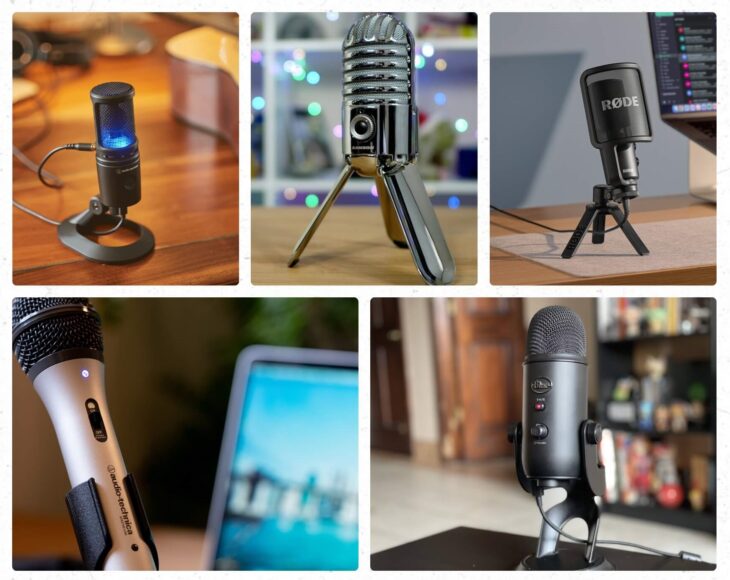
When it comes to remote work, having a reliable USB microphone is essential for clear and professional communication. Here are some top USB microphones to consider:
- Blue Yeti: The Blue Yeti is a popular choice among professionals and content creators. It offers high-quality audio recording with its multiple pickup patterns, including cardioid, bidirectional, omnidirectional, and stereo.
- Audio-Technica ATR2100x: The Audio-Technica ATR2100x is a versatile USB microphone that provides excellent sound quality for voice recordings. It features a USB connection and also includes an XLR output for connecting to professional audio interfaces.
- Rode NT-USB: The Rode NT-USB is a powerful USB microphone that delivers studio-quality sound. It has a built-in headphone jack for real-time monitoring and offers controls for adjusting headphone volume and microphone gain.
- Samson Meteor Mic: The Samson Meteor Mic is a compact and portable USB microphone with a sleek design. It offers a cardioid pickup pattern and produces clear and professional audio recordings.
- Audio-Technica AT2020USB+: The Audio-Technica AT2020USB+ is a reliable USB microphone known for its exceptional audio quality. It offers a wide dynamic range and a smooth, extended frequency response.
When it comes to remote work, having a reliable headset microphone is essential for clear communication during meetings, presentations, and virtual collaborations. Here are some factors to consider when choosing the best headset microphone: Considering these factors, here are some suggestions for the best headset microphones for remote work: Remember, choosing the best headset microphone depends on your specific needs and preferences. Consider factors like sound quality, comfort, connectivity, compatibility, and microphone range to find the perfect fit for your remote work setup. Happy remote working! Lavalier microphones, or lapel microphones, are a popular choice for various applications, such as public speaking, presentations, interviews, and video productions. They offer convenience, mobility, and hands-free operation, making them an essential tool for remote work. When choosing the best lavalier microphone, consider these key factors: Now, let’s explore the interesting history of lavalier microphones. Did you know that the term “lavalier” comes from the French actress Suzanne Lenglen? In the early 20th century, Lenglen used a discreet microphone attached to her clothing during performances to improve sound amplification. This innovative solution gained popularity in theaters and eventually crossed over to the film and television industry. Today, lavalier microphones are widely used in various fields, revolutionizing the way audio is captured and ensuring clear communication in remote work settings. Shotgun microphones are highly directional microphones that are designed to capture audio from a specific direction while minimizing background noise. They are commonly used in film production, interviews, and outdoor recording settings. When choosing a shotgun microphone, several factors should be considered: By considering these factors, you can choose a shotgun microphone that suits your specific recording requirements, whether you are a filmmaker, content creator, or journalist. Remember to match the microphone’s specifications with your intended use to ensure optimal audio quality and performance. When it comes to Bluetooth microphones for remote work, there are numerous options available that provide convenience and flexibility. Here are some top choices: When selecting a Bluetooth microphone, it’s crucial to consider your specific needs and requirements. Factors such as audio quality, battery life, range, and compatibility should be taken into account to ensure optimal performance and user experience. Additionally, it’s essential to check the connectivity options and confirm that the microphone is compatible with your device or operating system. Remember, Bluetooth microphones offer the convenience of wire-free usage and flexibility, making them popular choices for remote work. Whether you’re participating in virtual meetings or creating content, investing in a reliable Bluetooth microphone can significantly enhance your audio experience and overall professionalism.2. Headset Microphones
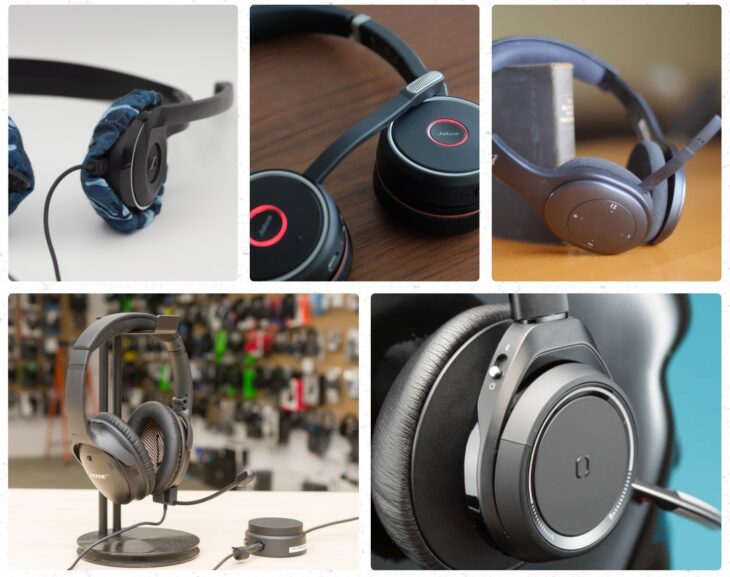
3. Lavalier Microphones
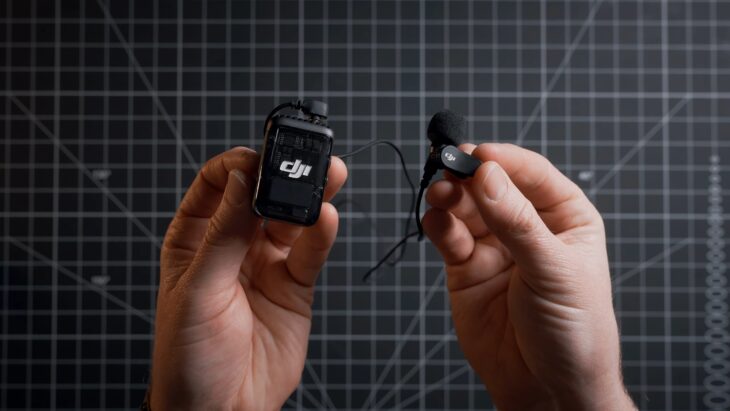
4. Shotgun Microphones
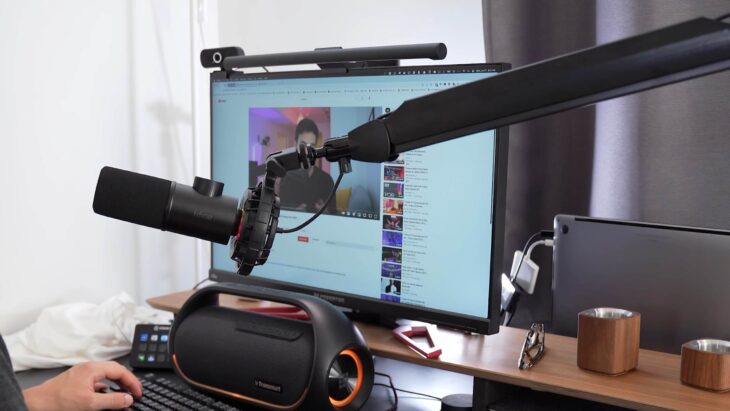
Type of Shotgun Microphone
Frequency Response
Polar Pattern
Sensitivity
Price Range
Rode VideoMic Pro+
20Hz – 20kHz
Supercardioid
-33dB
$250 – $300
Sennheiser MKH 416
40Hz – 20kHz
Supercardioid
-32dB
$900 – $1,000
Audio-Technica AT875R
90Hz – 20kHz
Line + Gradient
-30dB
$150 – $200
Schoeps CMIT 5U
40Hz – 20kHz
Supercardioid
-29dB
$2,500 – $3,000
Rode NTG3
40Hz – 20kHz
Supercardioid
-30dB
$500 – $600
5. Bluetooth Microphones
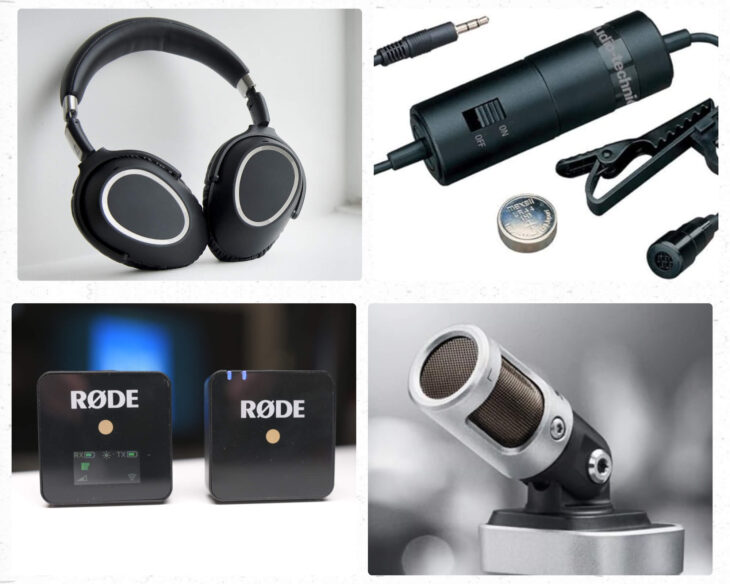
6. Condenser Microphones
When it comes to condenser microphones, there are several key factors to consider. Here is a list of important points to keep in mind:
- High Sensitivity: Condenser microphones, including condenser microphones, are known for their high sensitivity, making them ideal for capturing detailed audio. They are great for studio recordings, podcasts, and other professional applications where capturing every nuance is essential.
- Wide Frequency Range: These condenser microphones typically have a wider frequency range compared to dynamic microphones, allowing them to capture a broader spectrum of sound. This makes them suitable for recording vocals, instruments, and even ambient sounds.
- Power Requirements: Condenser microphones, including condenser microphones, require a power source, either in the form of phantom power or a battery, to operate. It’s important to ensure that the microphone you choose is compatible with the power source available to you.
- Delicate Construction: Due to their sensitive components, condenser microphones, including condenser microphones, tend to be more delicate compared to dynamic microphones. They require careful handling and should be protected from physical shocks or extreme temperatures to ensure longevity.
- Versatility: Condenser microphones, including condenser microphones, are highly versatile and can be used in various settings. They are commonly used in studios, podcasting setups, live performances, and home recording environments. Their ability to capture detailed audio makes them a popular choice for professionals and enthusiasts alike.
- Polar Patterns: These condenser microphones often come with switchable polar patterns, allowing you to adjust the microphone’s directionality. Cardioid, omnidirectional, and figure-eight are common polar patterns found in condenser microphones, including condenser microphones. Each pattern offers unique advantages and is suited for different recording scenarios.
- Price Range: Condenser microphones, including condenser microphones, vary in price, offering options for different budgets. Entry-level models provide decent audio quality at an affordable price, while high-end models offer top-notch performance with advanced features.
Considering these factors can help you make an informed decision when choosing a condenser microphone. Whether you’re a professional musician, podcaster, or content creator, finding the right condenser microphone will enhance your recording capabilities and ensure high-quality sound capture.
7. Dynamic Microphones
Dynamic microphones are a popular choice for a variety of audio recording and broadcasting applications. They are known for their durability, versatility, and ability to handle high sound pressure levels. Here are some key points to consider when looking for the best dynamic microphone:
- Sound Quality: Dynamic microphones are known for their warm and rich sound. They can capture high-quality audio across a wide frequency range, making them suitable for recording vocals, instruments, and even live performances.
- Directionality: Dynamic microphones come in various polar patterns, such as cardioid, supercardioid, and omnidirectional. The polar pattern determines the microphone’s sensitivity to sound from different directions. Choose a polar pattern that suits your specific recording needs.
- Durability: Dynamic microphones are built to last. They can withstand rough handling, making them ideal for live performances and outdoor recordings. Look for microphones with robust construction and metal casings for added durability.
- Handling Noise: Dynamic microphones are less sensitive to handling noise compared to other types like condenser microphones. This makes them suitable for handheld use, allowing you to move freely without worrying about unwanted noise being picked up.
- Price Range: Dynamic microphones offer a wide range of options to suit different budgets. They are generally more affordable compared to condenser microphones, making them a popular choice for home studios and live sound applications.
Now, let’s take a look at the interesting history of dynamic microphones:
The dynamic microphone, also known as the moving-coil microphone, was invented by engineer James Edward West and Gerhard Sessler in 1962. Their groundbreaking design revolutionized the world of audio recording. Prior to the invention of dynamic microphones, carbon microphones were commonly used, but they had limitations in terms of sound quality and durability.
West and Sessler’s dynamic microphone design featured a diaphragm attached to a coil, which was suspended within a magnetic field. When sound waves hit the diaphragm, it vibrated, causing the coil to move within the magnetic field. This movement generated an electric current, capturing the sound and converting it into an electrical signal.
The invention of dynamic microphones paved the way for advancements in audio technology. It enabled clearer and more accurate sound reproduction, making it an essential tool in broadcasting, recording studios, live performances, and communication systems. Over the years, dynamic microphones have continued to evolve with improvements in materials, designs, and technology.
Today, dynamic microphones remain a popular choice for professionals and enthusiasts alike. Their reliability, versatility, and affordability make them an indispensable tool for capturing high-quality audio in a wide range of applications.
8. Wireless Microphones
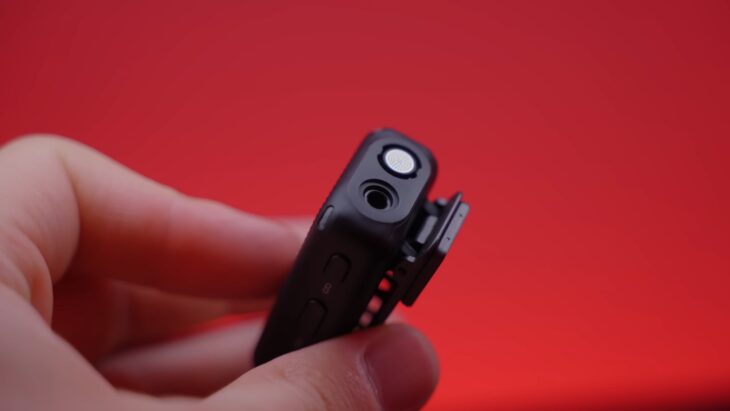
When it comes to remote work, wireless microphones are essential tools that provide convenience and flexibility in various settings. If you’re in the market for the best wireless microphone, consider the following factors:
- Operating range: One important factor to look for in wireless microphones is a wide operating range. This allows you to move freely without worrying about signal dropouts. The ideal operating range typically falls within 300-500 feet, ensuring reliable performance in most situations.
- Frequency range: It’s crucial to choose wireless microphones that operate within a frequency range that is both legal and suitable for your location. Different countries and regions have specific regulations when it comes to wireless frequencies, so make sure to ensure compatibility before making a purchase.
- Signal stability: Opt for wireless microphones that offer excellent signal stability to avoid interference or audio dropouts. Models with advanced frequency scanning and automatic channel selection features are particularly desirable as they ensure a clean and stable signal.
- Battery life: Consider the battery life of wireless microphones, especially if you’ll be using them for extended periods. It’s wise to choose models that offer long battery life, ideally around 8-10 hours. This will help you avoid interruptions during important meetings or presentations.
- Microphone type: There are different types of wireless microphones available, such as handheld, lavalier, or headset microphones. Select the microphone type that best suits your needs and preferences. Handheld microphones offer versatility, while lavalier and headset microphones provide hands-free convenience.
- Compatibility: Make sure that the wireless microphone system you choose is compatible with your existing audio equipment, whether it’s a computer, sound system, or remote work camera. Check for compatibility with common audio interfaces such as USB or XLR connections.
- Audio quality: The audio quality of wireless microphones is crucial for clear and professional communication. Look for microphones that offer high-quality audio transmission and clear sound reproduction. This ensures that your voice is accurately captured.
By considering these factors when choosing a wireless microphone, you can find a reliable and high-performing device that perfectly suits your remote work needs. When setting up your wireless microphone system, make sure to follow proper installation procedures and any accompanying instructions. This will optimize performance and help you avoid interference.
9. Webcam Microphones
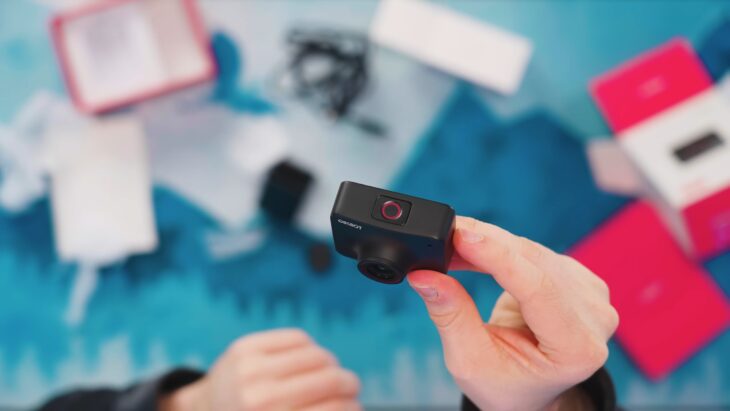
When it comes to webcam microphones, choosing the right one can greatly enhance your remote work experience. Webcam microphones are essential tools for video conferences and online meetings, providing professional-grade sound and clear communication. To ensure you make the best choice, consider these key factors:
- Audio quality: The most important aspect of a webcam microphone is its audio quality. Look for models that offer clear and crisp sound, minimizing background noise and echo. The Logitech C920 is renowned for its exceptional audio quality, delivering studio-like sound for your remote meetings.
- Connectivity options: Before purchasing a webcam microphone, check its connectivity options to ensure compatibility with your computer or device. USB microphones are the most common and widely supported option. The Blue Yeti USB Microphone is a popular choice that provides excellent sound quality and compatibility with various devices.
- Portability: If you need to use your webcam microphone on the go, consider its portability. Look for compact and lightweight options that are easy to carry and set up. The Razer Seiren Mini USB Streaming Microphone is a perfect portable solution for remote work, ensuring you can always have high-quality sound wherever you go.
- Additional features: Some webcam microphones offer additional features that can enhance your remote work setup. Look for features like built-in headphone jacks for real-time audio monitoring, mute buttons for easy control, and adjustable stands for optimal positioning. The Samson Go Mic Portable USB Condenser Microphone is a versatile option that provides these features for improved convenience.
- Budget: Consider your budget when choosing a webcam microphone. There are options available at various price points, so you can find one that fits your needs and budget. The Audio-Technica ATR2500x-USB Cardioid Condenser Microphone is an excellent choice that offers a great balance between performance and affordability.
When it comes to remote work, having a reliable and high-quality clip-on microphone is essential for clear and distortion-free audio. Here are some important factors to consider when choosing the best clip-on microphone: Now, let me share a true story to illustrate the importance of a good clip-on microphone. Jane, a freelance journalist, was assigned to conduct an interview remotely for a news article. She had a low-quality clip-on microphone that she had purchased on a budget. During the interview, the microphone picked up a lot of background noise, making it difficult to hear the interviewee’s responses clearly. The audio quality was so poor that Jane had to spend hours transcribing the interview to accurately capture the information. Realizing the importance of a reliable clip-on microphone, Jane decided to invest in a high-quality microphone with excellent audio quality and noise cancellation features. The next time she conducted an interview, the difference was evident. The audio was clear, with no background noise, and she could focus on the conversation instead of struggling to understand the interviewee’s words. By considering factors such as audio quality, compatibility, convenience, durability, and price, you can find the best clip-on microphone for your remote work needs. Don’t underestimate the impact a good microphone can have on the clarity and professionalism of your audio recordings.10. Clip-on Microphones
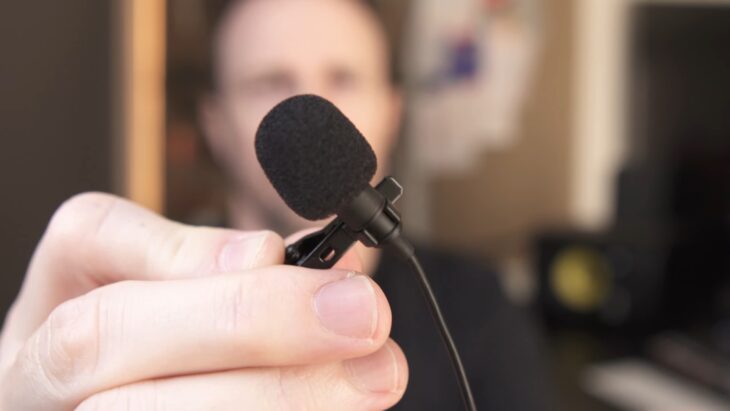
What to Consider When Choosing a Microphone for Remote Work?
When choosing a microphone for remote work, here are some important factors to consider:
- Compatibility: It is crucial to ensure that the microphone you select is compatible with your remote work device. Check if it works with your computer, laptop, or smartphone, and if it requires any additional software or drivers.
- Connectivity: The type of connectivity you need is another factor to consider. USB microphones are easy to use and typically plug-and-play, while XLR microphones require an audio interface for connection.
- Audio Quality: For remote work, especially for online meetings, conferences, or podcasts, high-quality audio is essential. Look for a microphone that offers clear and crisp sound reproduction to accurately capture your voice.
- Directional Characteristics: Different microphones have different directional characteristics. Consider whether you need an omnidirectional microphone that captures sound from all directions, a cardioid microphone that focuses on sound from the front, or a noise-cancelling microphone that cancels out background noise.
- Portability: If you frequently travel or work from different locations, portability is a crucial factor. Look for a lightweight, compact, and easy-to-carry microphone.
- Budget: Determine a budget for your microphone purchase and explore options within that range. There are microphones available at various price points, allowing you to find a suitable option that fits your needs and budget.
- Accessories: Check if the microphone comes with any accessories or additional features that can enhance your remote work experience. This may include a microphone stand, pop filter, shock mount, or built-in headphone jack.
- Reviews and Recommendations: Before making a final decision, read reviews and seek recommendations from professionals or colleagues experienced in remote work microphones. Their insights can provide valuable information to help you make an informed choice.
Considering these factors will assist you in selecting the right microphone for your remote work needs. Remember to prioritize reliable performance, audio quality, and compatibility with your setup.
What Is the Purpose of the Microphone?
When considering the purpose of a microphone, it is important to understand its primary function and how it can enhance your remote work experience. So, what is the purpose of the microphone?
1. Communication: The main purpose of a microphone is to capture and transmit your voice clearly during online meetings, conference calls, and video chats. It allows you to effectively communicate and ensures that your message is heard by others.
2. Collaboration: A microphone is crucial for collaborating with colleagues, clients, or teammates remotely. It enables you to actively participate in discussions, share ideas, and contribute to group projects, fostering collaboration and teamwork.
3. Presentation and recording: If you frequently give presentations or create audiovisual content, a microphone is essential. It helps deliver your message with clarity and professionalism. Whether you are recording podcasts, voice-overs, or webinars, a quality microphone ensures high-quality audio recordings.
4. Accessibility: For individuals with hearing impairments, a microphone is vital in various remote work scenarios. It allows those who rely on captions or lip-reading to follow along during video conferences, ensuring everyone can participate and engage in virtual meetings.
5. Noise cancellation: An important aspect of microphone technology is noise cancellation. Having a microphone with good noise-canceling features can help minimize background noise, creating a more focused and distraction-free environment during remote work.
6. Virtual events and performances: If you frequently participate in virtual events or live performances, a microphone is crucial to delivering a professional audio experience to your audience. It ensures that your voice or performance is clear, enhancing the overall quality of the virtual event.
Remember, the purpose of a microphone is to capture and transmit your voice effectively. So, consider your specific needs, such as the type of remote work you engage in and your budget, when choosing the right microphone. Also, keep in mind the compatibility requirements of your devices and the environment in which you will be working. By selecting a microphone that aligns with your purpose and requirements, you can enhance your remote work experience and effectively communicate with others.
What Is the Budget?
When considering which microphone to choose for remote work, one important factor to take into account is the budget. Below are some points to consider when determining what budget is appropriate for your microphone:
- Determine your spending limit: Before starting the search, it is important to establish a budget range that you are comfortable with. This will help narrow down the options and prevent overspending.
- Research microphone prices: Look into the different types of microphones available and their price ranges. USB microphones are often a more affordable option, while wireless and higher-end condenser microphones can be more expensive. By exploring the market, you can get an idea of what kind of microphone fits within your budget range.
- Consider the purpose and use: Think about how often you will be using the microphone and for what purposes. If you will be using it frequently or for professional purposes, investing in a higher-quality microphone might be worth the extra cost. However, if you will only be using it occasionally or for personal use, a more budget-friendly option may suffice.
- Look for good value: Ensure you are getting good value for your money by comparing the features and quality of different microphones within your budget range. Read reviews and consider recommendations from trusted sources to ensure you are getting the best microphone for your budget.
- Consider long-term durability: While it’s important to work within your budget, also consider the long-term durability of the microphone. Investing in a slightly more expensive but durable microphone can save you money in the long run, as you won’t need to replace it as frequently.
By considering your budget and researching the prices and features of different microphones, you can find a microphone that meets your needs while staying within your financial parameters. Remember, it’s not always necessary to spend a lot of money to find a microphone that delivers good performance for remote work.
What Are the Compatibility Requirements?
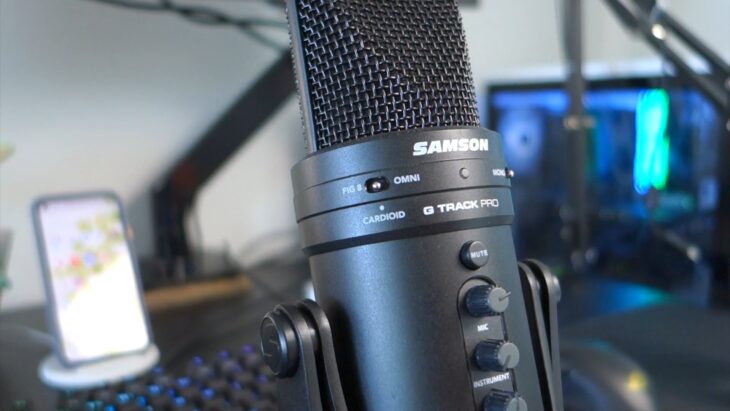
When choosing a microphone for remote work, it is essential to consider the compatibility requirements. It is crucial to ensure seamless integration with your devices and software. Here are some key factors to consider when it comes to compatibility:
- Operating System Compatibility: One of the most important aspects is to determine if the microphone is compatible with the operating system of your computer or device. Whether you are using Windows, macOS, or a specific mobile operating system, make sure that the chosen microphone supports your system.
- Connection Type: Different microphones use various connection types, such as USB, XLR, or Bluetooth. It is vital to check the compatibility of the microphone’s connection type with your computer or device. USB microphones are generally the most versatile and can work with various devices without the need for additional adapters.
- Software Compatibility: Another crucial aspect is to confirm if the microphone is compatible with the specific software or applications you will be using for remote work. This becomes especially important when using video conferencing platforms, recording software, or voice recognition tools. Ensure that the microphone works seamlessly with the software you rely on.
- Device Compatibility: Consider whether the microphone can easily connect to your preferred devices, such as laptops, tablets, or smartphones. Some microphones are designed specifically for certain devices or have limited compatibility. Therefore, it is crucial to check if it aligns with your remote work setup.
- Plug-and-Play Capability: Opt for a microphone that is plug-and-play, meaning it can be easily connected and used without additional drivers or software installations. This ensures a hassle-free setup and compatibility with a wide range of devices.
Remember, compatibility requirements may vary depending on your specific needs and setup. It is always advisable to thoroughly research and read product specifications for compatibility information before making a purchase. By considering these compatibility requirements, you can choose a microphone that seamlessly integrates with your remote work environment.
What Is the Environment Like for Remote Work?
When considering the environment for remote work, it is important to take into account several factors to ensure optimal productivity and performance. Here is a breakdown of what to consider:
1. Noise levels: Before setting up your remote work area, assess the noise levels in the environment. Is it a quiet space or are there distractions like traffic or construction nearby? A quiet environment is essential for clear communication during virtual meetings or conferences.
2. Room acoustics: Pay attention to the acoustics of your workspace. Are there hard surfaces that may cause echoes or reverberations? To create a more professional and pleasant audio experience, consider adding acoustic treatments such as foam panels or curtains to reduce unwanted reflections.
3. Background noise: Be mindful of potential sources of background noise such as appliances, fans, or pets. These can negatively impact the clarity and quality of your audio recordings or live calls. Opt for a space with minimal background noise to ensure clear communication.
4. Internet connection: Evaluate the reliability and speed of your internet connection. A stable and high-speed internet connection is crucial for uninterrupted video conferencing, online meetings, and voice calls. Ensure that your connection is capable of handling the demands of remote work.
5. Lighting conditions: Check the lighting conditions in your workspace. Is the room well-lit or too dim? Adequate lighting is important for video calls and conferences as it ensures that you are clearly visible to others and creates a professional appearance.
6. Ergonomics: Consider the ergonomics of your home office setup. Are you sitting in a comfortable chair with proper posture? Do you have a suitable desk or table to work on? Creating a comfortable and ergonomic workspace contributes to your overall well-being and productivity.
By taking these environmental factors into consideration when setting up your remote work area, you can create an ideal work environment that promotes focus, professionalism, and effective communication.
What Features Are Important for Remote Work?
When it comes to remote work, it is crucial to consider the important features that are essential for clear communication and professional sound quality in a microphone. Here are the key features to look for:
- High-Quality Audio: Ensure that the microphone delivers clear and crisp audio, allowing others to easily hear and understand your voice.
- Noise Cancellation: Opt for a microphone with advanced noise cancellation technology to minimize background noise and distractions during remote meetings or calls.
- Portability: Consider a portable microphone that is easy to carry and set up, especially if you need to work from different locations.
- Connectivity Options: Check for microphone compatibility with your devices, whether they are USB, Bluetooth, or wireless connections, to seamlessly integrate with your setup.
- Adjustable Microphone Stand: A flexible or adjustable microphone stand allows you to position the microphone at the ideal height and angle for optimal sound capture.
- Mute Button: Having a mute button on the microphone gives you control over when your audio is transmitted, allowing you to eliminate background noise when not speaking.
- Headphone Monitoring: Look for a microphone with a built-in headphone jack or monitoring feature to listen to your audio in real-time and make adjustments as needed.
- Easy Setup: Choose a microphone that offers a quick and hassle-free setup, allowing you to start your remote work without any technical difficulties.
- Durable Construction: Consider a microphone with a sturdy build to withstand daily use and potential transportation.
- Battery Life: If you prefer a wireless or Bluetooth microphone, ensure it has a long battery life to avoid interruptions during remote work sessions.
By keeping these features in mind, you can select a microphone for remote work that meets your specific needs and enhances your communication and audio quality.
If you are looking for microphone recommendations for remote work, some popular options include the Blue Yeti USB Microphone, Audio-Technica ATR2100x-USB Dynamic Microphone, and Shure MV7 Podcast Microphone. These models offer a combination of the mentioned features and have received positive reviews for their performance in remote work environments.
Frequently Asked Questions
What are the best microphones for remote work and home office setups?
Some of the best microphones for remote work and home office setups are the Sennheiser SC635, Shure MV5 Digital Condenser Microphone, Elgato Wave:3, JLab Talk, Amazon Basics Desktop Mini Condenser Microphone, and HyperX SoloCast. These microphones offer clear vocals, reject background noise, and provide versatile features to enhance your communication experience.
What microphone is recommended for virtual conferences and Zoom meetings?
The Sennheiser SC635 and Shure MV5 Digital Condenser Microphone are highly recommended for virtual conferences and Zoom meetings. These microphones ensure clear lines of communication and minimize background noise, allowing you to communicate effectively with remote teams and participate in roundtable discussions.
Which microphone is suitable for music work and voice overs?
For music work and voice overs, the Elgato Wave:3, HyperX SoloCast, and Rode PodMic are excellent choices. These microphones offer studio credentials, high-quality sound recording, and easy setup, making them ideal for capturing clear and professional-sounding vocals.
What are the benefits of using USB microphones for remote work?
USB microphones, such as the Shure MV5 Digital Condenser Microphone and Amazon Basics Desktop Mini Condenser Microphone, are easy to use, improve sound quality, and eliminate the need for additional equipment or software. They are suitable for remote meeting participants, podcasters, Twitch streamers, musicians, and vloggers, providing convenience and enhancing the overall audio experience.
How can I improve audio quality while working remotely with a laptop microphone?
To improve audio quality while working remotely with a laptop microphone, consider upgrading to a standalone microphone like the JLab Talk or using corded headsets like the Sennheiser SC635. Laptop microphones often have poor audio quality, and using high-end broadcast-style microphones or corded headsets can significantly enhance your speaking tone and minimize background noise.
Are there any recommendations for lighting options during video calls?
Adding good desktop lighting options, such as ring lights or adjustable desk lamps, can significantly enhance your video calls. Clear and well-lit visuals help create a professional environment and improve overall video communication.



